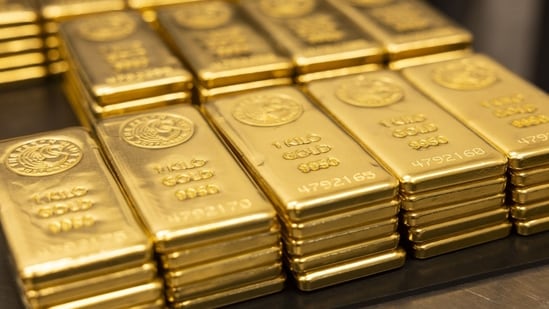Gold prices held a three-day drop, hurt by fading expectations for another rate cut by the US Federal Reserve next month.
Gold traded near $4,034 an ounce, after losing almost 4% over the prior three sessions. The spot gold was 0.3% lower at $4,033.75 an ounce at 10:40 am in Singapore. The Bloomberg Dollar Spot Index was flat. Silver and palladium fell, while platinum edged higher.
With investors awaiting a backlog of data after the US government shutdown, several Federal Reserve officials have cautioned against another cut, although Governor Christopher Waller came out in favour.
Interest-rate swaps now imply a less-than-50% likelihood of a December cut after all but pricing in a quarter-point reduction less than a month ago. The shift in expectations dampened the outlook for the precious metal, which doesn’t pay interest and typically benefits from lower rates.
The first labour-market clues come on Thursday, when the Bureau of Labor Statistics is set to release the September jobs report. While the data will be more backward-looking than usual, the figures will still help shed light on the state of the world’s largest economy after the six-week shutdown.
Gold has still gained more than 50% this year despite the recent pullback, and remains on course for the best annual gain since 1979. Investors have bought the metal as a hedge against growing fiscal unease in several major economies, while elevated central-bank buying also provided crucial support for bullion’s blistering run to a record above $4,380 last month.
Official-sector purchases will likely continue, according to Goldman Sachs Group Inc. Central banks bought an estimated 64 tons in September, more than triple the amount in August, analysts from the bank said in a note. China alone added an estimated 15 tons, they said; that figure is higher than the 1.24 tons reported by the nation’s central bank for that month.
“We continue to see elevated central-bank gold accumulation as a multiyear trend, as central banks diversify their reserves to hedge geopolitical and financial risks,” the analysts including Lina Thomas wrote.
